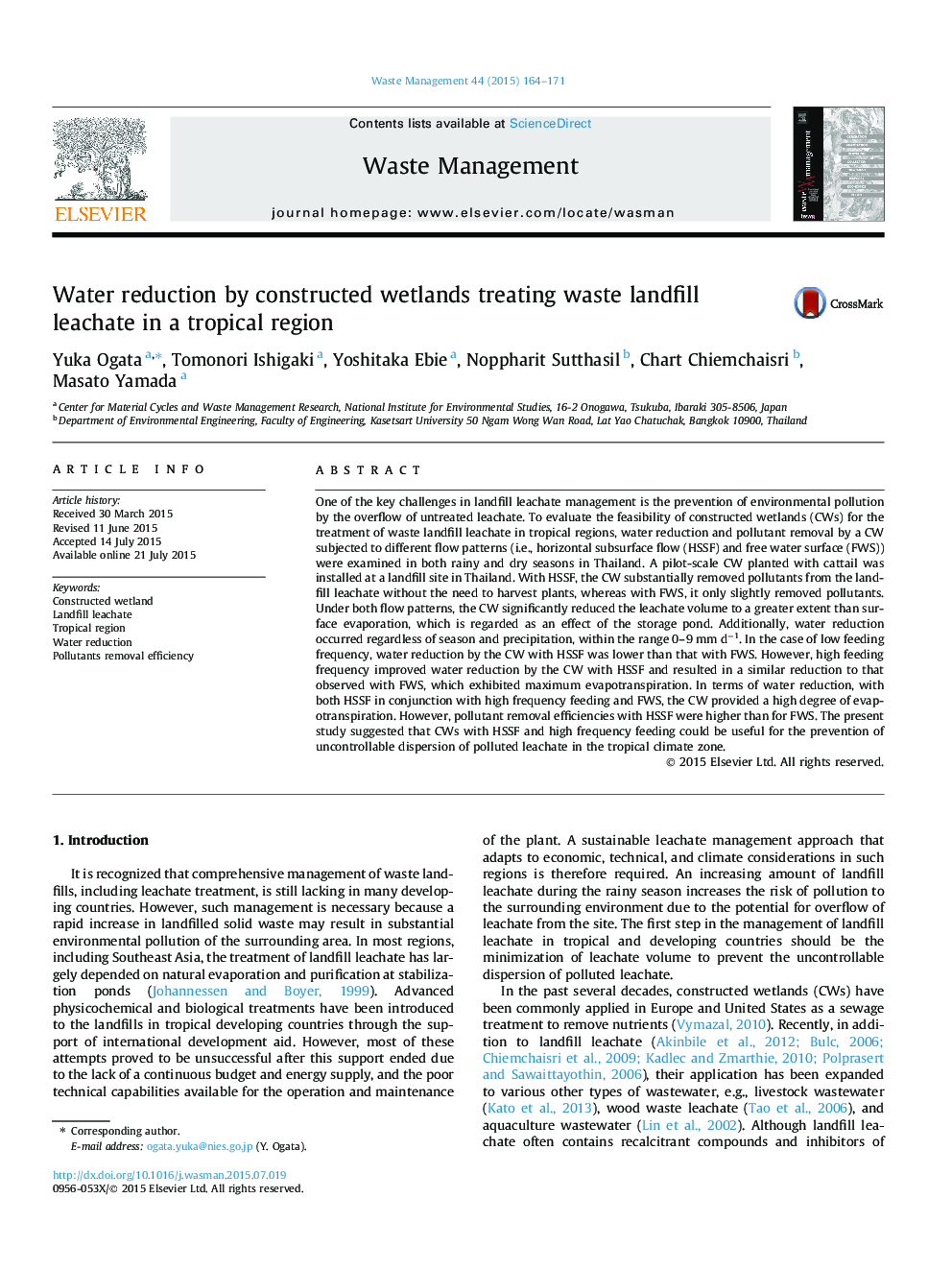| کد مقاله | کد نشریه | سال انتشار | مقاله انگلیسی | نسخه تمام متن |
|---|---|---|---|---|
| 4471367 | 1622641 | 2015 | 8 صفحه PDF | دانلود رایگان |
• A constructed wetland with cattail was established at a landfill site in Thailand.
• Volume and pollutant reductions of leachate for different operations were evaluated.
• Substantial mass removal of the pollutants was obtained regardless of season.
• Water reduction by the constructed wetland was more than that by surface evaporation.
• Horizontal subsurface flow will suit leachate management in tropical regions.
One of the key challenges in landfill leachate management is the prevention of environmental pollution by the overflow of untreated leachate. To evaluate the feasibility of constructed wetlands (CWs) for the treatment of waste landfill leachate in tropical regions, water reduction and pollutant removal by a CW subjected to different flow patterns (i.e., horizontal subsurface flow (HSSF) and free water surface (FWS)) were examined in both rainy and dry seasons in Thailand. A pilot-scale CW planted with cattail was installed at a landfill site in Thailand. With HSSF, the CW substantially removed pollutants from the landfill leachate without the need to harvest plants, whereas with FWS, it only slightly removed pollutants. Under both flow patterns, the CW significantly reduced the leachate volume to a greater extent than surface evaporation, which is regarded as an effect of the storage pond. Additionally, water reduction occurred regardless of season and precipitation, within the range 0–9 mm d−1. In the case of low feeding frequency, water reduction by the CW with HSSF was lower than that with FWS. However, high feeding frequency improved water reduction by the CW with HSSF and resulted in a similar reduction to that observed with FWS, which exhibited maximum evapotranspiration. In terms of water reduction, with both HSSF in conjunction with high frequency feeding and FWS, the CW provided a high degree of evapotranspiration. However, pollutant removal efficiencies with HSSF were higher than for FWS. The present study suggested that CWs with HSSF and high frequency feeding could be useful for the prevention of uncontrollable dispersion of polluted leachate in the tropical climate zone.
Journal: Waste Management - Volume 44, October 2015, Pages 164–171
